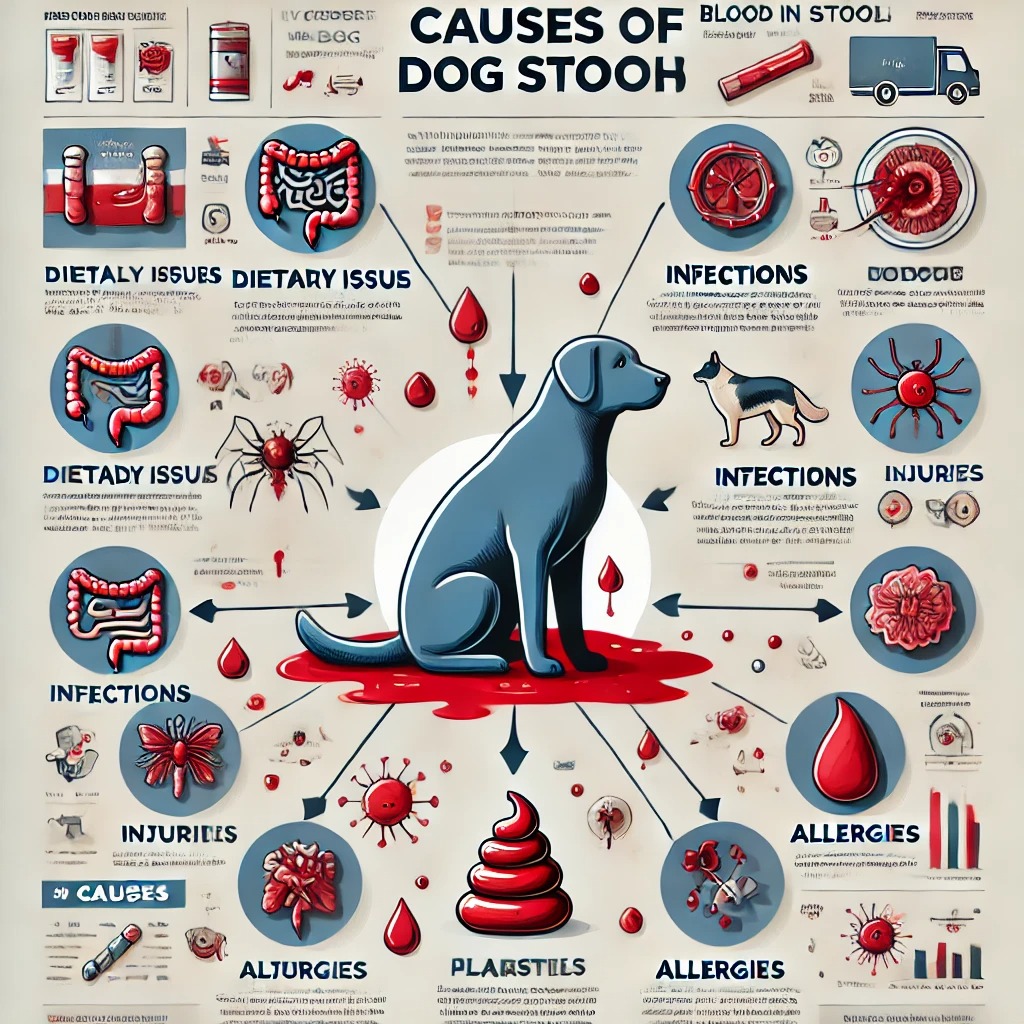
Seeing your dog pooping blood can be alarming and worrisome. This article will help you understand the potential causes, how to diagnose the issue, and the available treatment options for a dog pooping blood.
Causes of Dog Pooping Blood
There are various reasons why a dog might poop blood, ranging from mild to severe conditions. Some of the common causes include:
- Dietary Indiscretion: Eating inappropriate or spoiled food can cause gastrointestinal upset, leading to bloody stools.
- Parasites: Intestinal parasites like hookworms and whipworms can damage the intestinal lining, causing blood in the stool.
- Infections: Bacterial, viral, or fungal infections can lead to inflammation of the intestines, resulting in blood in the stool.
- Inflammatory Bowel Disease (IBD): Chronic inflammation of the intestines can cause ulcers and bleeding.
- Trauma: Injuries to the gastrointestinal tract from swallowing sharp objects can lead to bleeding.
- Tumors: Benign or malignant tumors in the digestive tract can cause bleeding.
- Hemorrhagic Gastroenteritis (HGE): A sudden onset of severe vomiting and bloody diarrhea, often without a known cause.
- Toxins: Ingesting toxic substances like certain plants or chemicals can lead to gastrointestinal bleeding.
- Allergies: Food allergies can cause inflammation and bleeding in the intestines.
Diagnosis of Dog Pooping Blood
If you notice your dog pooping blood, it is crucial to consult a veterinarian promptly. The vet will perform a thorough examination and may recommend several diagnostic tests, including:
- Physical Examination: Checking for any signs of pain, dehydration, or abnormalities.
- Fecal Examination: Analyzing the stool for parasites, bacteria, or other abnormalities.
- Blood Tests: Checking for infections, organ function, and overall health.
- Imaging: X-rays or ultrasounds to visualize the gastrointestinal tract and identify any blockages, tumors, or foreign objects.
- Endoscopy: A procedure that uses a camera to look inside the digestive tract and take biopsies if needed.

Treatment of Dog Pooping Blood
Treatment depends on the underlying cause. Here are some potential treatment options:
- Dietary Changes: Switching to a bland diet or a special prescription diet to soothe the digestive system.
- Medication: Antibiotics, anti-parasitic drugs, anti-inflammatories, or other medications to treat infections, parasites, or inflammation.
- Fluid Therapy: Intravenous fluids to prevent dehydration and support recovery.
- Surgery: In cases of tumors, severe injuries, or foreign objects, surgery may be necessary.
- Supportive Care: Providing comfort and care while the dog recovers, including rest and monitoring.

Prevention of Dog Pooping Blood
To reduce the risk of your dog pooping blood, consider these preventive measures:
- Proper Diet: Feed your dog a balanced, high-quality diet appropriate for their age and health status.
- Regular Vet Visits: Routine check-ups can help catch potential issues early.
- Parasite Control: Use regular deworming and flea prevention treatments.
- Safe Environment: Keep harmful substances and objects out of your dog’s reach.
- Monitoring: Watch for any changes in your dog’s behavior, appetite, or bowel movements, and seek veterinary advice if needed.


Explore more Benefits of Outdoor Exercise :https://kucch.co/benefits-of-outdoor-exercise/
